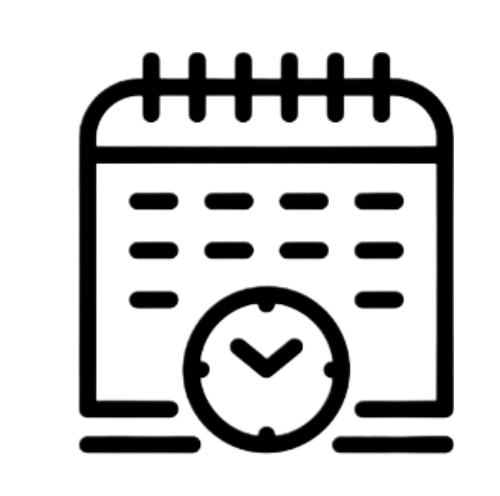CIICP Certification
Certified IEC62443 ICS Cybersecurity Professional
Elevate your cybersecurity expertise with our Certified IEC62443 ICS Cybersecurity Professional course. This advanced training program is designed for individuals aiming to master the implementation and management of cybersecurity measures specific to Industrial Control Systems (ICS) and Operational Technology (OT) environments. Through a structured approach and adherence to international standards, you'll learn to protect critical infrastructure from evolving cyber threats.
Industrial Control Systems (ICS) are the backbone of modern industrial processes, including manufacturing, energy production, and water treatment. Given their critical role, ICS are prime targets for cyber attacks. Implementing robust cybersecurity measures in accordance with IEC 62443 standards is essential to prevent disruptions, protect sensitive data, and ensure the continuous operation of vital industrial processes. This course equips professionals with the skills and knowledge to safeguard these systems against cyber threats effectively.

Why Enroll in This Course
Enrolling in the Certified IEC62443 ICS Cybersecurity Professional course offers unparalleled advantages:
In-Depth Knowledge
Dive deep into the intricacies of IEC 62443 standards and their practical application in securing IACS.
Industry-Specific Skills
Learn the key differences between ICS and DCS, and the roles of PLCs and RTUs in industrial automation, enhancing your technical acumen.
Comprehensive Cybersecurity Controls
Master the implementation of essential cybersecurity controls such as access control, network segmentation, encryption, and incident response tailored for ICS/OT environments.
Risk Management Expertise:
Develop expertise in risk assessment, security policy formulation, and defense-in-depth strategies to mitigate potential cybersecurity threats.Career Advancement:
Stand out in the competitive cybersecurity field with a certification that demonstrates your advanced knowledge and skills, making you a sought-after expert in protecting critical industrial infrastructure. .
Expert Instruction:
Learn from seasoned industry professionals who provide real-world insights and practical guidance, ensuring you gain actionable knowledge

Secure Your Future in IEC62443 ICS Cybersecurity
By completing this course, you will be well-prepared to implement and manage robust cybersecurity measures for industrial control systems, safeguarding critical infrastructure and enhancing your career prospects in the rapidly growing field of ICS cybersecurity. Join us to make a significant impact on industrial cybersecurity and advance your professional journey.
Stay tuned for fresh content, twice a day! Elevate your learning experience with our daily course video uploads.
Course Overview
What You'll Learn
IEC 62443 Cybersecurity Professional
IEC 62443 Cybersecurity Professional focuses on individuals trained to implement and manage cybersecurity measures specific to industrial control systems (ICS) and operational technology (OT) environments. They are equipped to protect critical infrastructure from cyber threats through a structured approach and adherence to international standards.
Module 2:
Briefing of ICS (Industrial Control Systems)
Industrial Control Systems (ICS) are used to monitor and control industrial processes such as manufacturing, energy production, and water treatment. They comprise hardware, software, and networking components that interact with physical processes to ensure efficient and reliable operation.
Difference between ICS and DCS (Distributed Control Systems)
- ICS (Industrial Control Systems): A broad category encompassing various control systems used in industries to automate processes, manage devices, and collect data from sensors. It includes systems like PLC-based control systems and DCS.
- DCS (Distributed Control Systems): Specifically refers to control systems used in large-scale industrial processes where multiple autonomous controllers are distributed throughout a system. DCS typically integrates centralized supervisory control and data acquisition (SCADA) for monitoring and managing processes.
- PLC (Programmable Logic Controller): A specialized digital computer used to automate electromechanical processes in industrial environments. PLCs execute control algorithms and manage devices based on user-defined logic.
- RTU (Remote Terminal Unit): Similar to PLCs, RTUs are used in remote locations to collect data from sensors and control devices. They often interface with SCADA systems to monitor and manage distributed assets.
Module 5:
ICS Architecture
ICS architecture typically includes:
- Field Devices: Sensors, actuators, and instruments that interface directly with physical processes.
- PLCs/RTUs: Control units that execute control algorithms and communicate with field devices.
- SCADA (Supervisory Control and Data Acquisition): Software for real-time monitoring, control, and data acquisition from remote devices.
- HMI (Human-Machine Interface): Graphical interface for operators to interact with the control system.
- Network Infrastructure: Communication channels (e.g., LAN, WAN) used for data transmission within the control system.
Introduction of Standards (e.g., ISA99/IEC 62443)
ISA99/IEC 62443International standards providing guidelines and best practices for cybersecurity in IACS (Industrial Automation and Control Systems). They address risk assessment, security policies, network segmentation, access control, and incident response to safeguard industrial systems from cyber threats.
Foundation of ISA99/IEC 62443
The foundation of ISA99/IEC 62443 includes:
- Risk Assessment: Identifying and evaluating cybersecurity risks specific to ICS/OT environments.
- Security Policies: Establishing policies and procedures to mitigate identified risks and protect critical assets.
- Defense-in-Depth: Implementing multiple layers of security controls to prevent and mitigate cyber attacks.
- Continuous Monitoring: Monitoring systems and networks for anomalies and potential cybersecurity incidents.
- Incident Response: Developing procedures to detect, respond to, and recover from cybersecurity incidents effectively.
Module 8:
Cybersecurity Controls for ICS/OT
Cybersecurity controls for ICS/OT environments include:
- Password, Biometric, Token: Authentication methods to verify the identity of users accessing critical systems and data.
- High/Low Level Risk Assessment: Assessing cybersecurity risks at different levels (e.g., system, network, application) to prioritize mitigation efforts.
- Authentication and Authorization Controls: Ensuring only authorized users have access to specific resources and functions within the ICS/OT environment.
- DFA (Data Flow Analysis), Firewalls, VPN, PKI: Implementing technical controls such as network segmentation, firewalls, virtual private networks (VPNs), and public key infrastructure (PKI) to secure communication and data integrity.
- Zones, Conduits, and Security Levels: Segmenting ICS networks into zones based on security requirements and defining conduits to control data flow between zones. Assigning security levels (e.g., SL1-SL3) based on risk assessments and system criticality.
- Log Management: Collecting, analyzing, and storing audit logs and security events to facilitate incident detection, investigation, and response.
Module 9:
Industrial Use Case for SL1-SL3
Security Levels (SL1-SL3) are applied in industrial environments to categorize systems and components based on their criticality and the level of cybersecurity measures required. Examples include:
- SL1 (Low Security Level): Non-critical systems with basic cybersecurity controls, suitable for non-essential functions.
- SL2 (Moderate Security Level): Systems supporting critical functions with enhanced cybersecurity measures to protect against common cyber threats.
- SL3 (High Security Level): Critical systems requiring robust cybersecurity controls and continuous monitoring to defend against sophisticated cyber attacks.
Module 10:
Real-Time Audit Checklist
A real-time audit checklist for ICS/OT environments includes:
- Network Security: Ensure proper segmentation, firewall rules, and VPN configurations.
- Access Control: Verify authentication mechanisms, user permissions, and audit trails for access to critical systems.
- System Integrity: Check software/firmware versions, patch management, and configuration management practices.
- Incident Response: Review incident response plans, incident handling procedures, and readiness to mitigate cybersecurity incidents.
- Compliance: Assess adherence to cybersecurity standards (e.g., IEC 62443), regulatory requirements, and industry best practices.
Module 11:
Real-Time Manufacturing Audit Assignment and Walkthrough
During a real-time manufacturing audit assignment and walkthrough:
- Assignment: Assign audit tasks to assess cybersecurity controls and compliance with standards and policies.
- Walkthrough: Conduct a physical and digital walkthrough of the manufacturing facility to observe cybersecurity measures in action.
- Documentation Review: Examine cybersecurity policies, procedures, and documentation related to ICS/OT security.
- Interviews: Interview personnel responsible for cybersecurity, operations, and IT to understand practices and challenges.
- Observation: Observe operational practices, system configurations, and employee awareness of cybersecurity risks and procedures.
How The Course Benifits You

Flexibility & convenience of time and space

Access to expertise & world-class curriculum, comparable to any other globally recognised qualification

Optimal pricing with maximum value; achieving the best costs for efficiency and effectiveness


